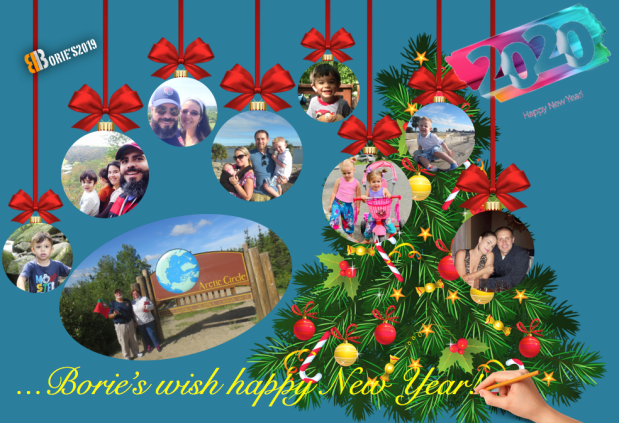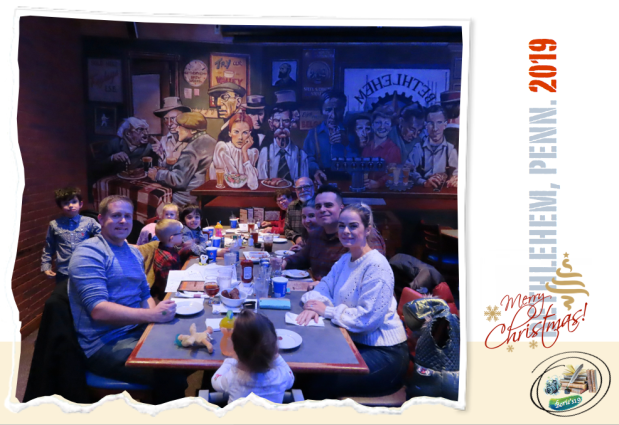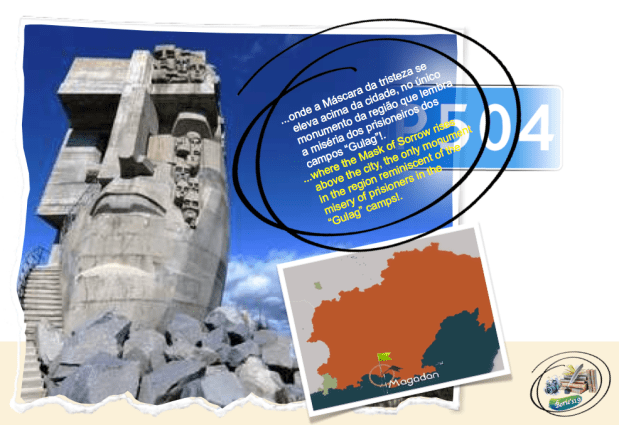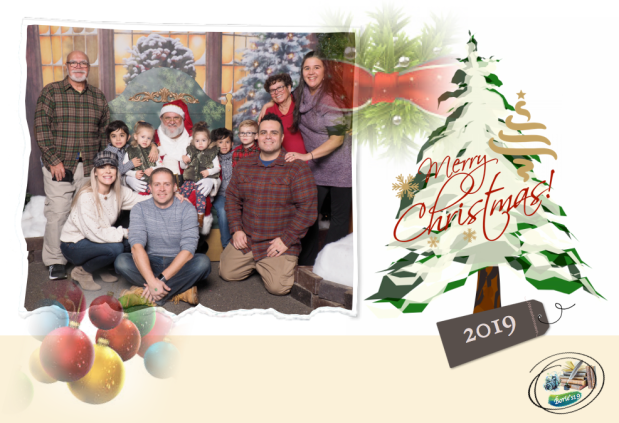…ano Novo, 2020!. (New Year, 2020)!

…neste ano prestes a terminar, em que o cheiro do Natal ainda paira no ar, a nostalgia invade-nos e tudo nos vem à memória!. E claro, os momentos menos bons teimam em ser mais fortes e presentes, porque trazem consigo a dor, a angústia e o sofrimento, passados na guerra sangrenta de guerrilha que vivemos quando jovens, por um período de dois longos anos, no interior daquela África distante e, naquela época ainda um pouco selvagem, longe da Europa, onde nascemos!. (This year is about to end, when the smell of Christmas still lingers in the air, nostalgia invades us and everything comes to mind!. And of course, the less good times insist on being stronger and more present, because they bring with them the pain, anguish, and suffering that we experienced in the bloody guerrilla warfare we experienced as young people for a long time in Africa, distant and at that time still a little wild, far from Europe where we were born)!.

…esses momentos menos bons, trazem lágrimas que continuam sufocadas no peito, que a dureza da vida não permitem que se soltem, e claro, corta-nos a alma e, qualquer outra manifestação mais alegre, emudece o nosso raciocínio, obrigando-nos em certos momentos a largar um pequeno sorriso, mas que que não é bem um sorriso, porque sai de um rosto endurecido, onde o hábito de sorrir começa a ser cada vez mais raro, até que um dia vai partir para sempre!. (These less good moments bring tears that are still suffocated in the chest, that the hardness of life does not allow them to let go, and of course, cuts our soul and, any other more joyful manifestation, mutes our reasoning, forcing us We sometimes drop a small smile, but that is not quite a smile, because it comes out of a hardened face, where the habit of smiling is becoming increasingly rare, until one day it will go away forever)!.

…mas nem tudo é ruim na vida, existem momentos bons, situações boas e felizes, a família crescendo e, como já por diversas vezes mencionámos em textos anteriores, “A família, é o centro da vida”, ou “Sem família, tudo é tão pouco”, pensando nela, encontramos o apoio e o calor do abraço, a alegria, a melancolia na partilha de memórias, de brincadeiras, o respeito por quem somos e pelo que somos, devido aos tantos anos de convivência e de partilha de confiança!. (But not everything is bad in life, there are good times, good and happy situations, the family growing up and, as we have mentioned several times in previous texts, “The family is the center of life”, or “No family, everything is so little”, thinking of her, we find the support and warmth of the hug, the joy, the melancholy in sharing memories, jokes, respect for who we are and what we are, due to so many years of living and trust sharing)!.

…olhando para os nossos netos brincando, qualquer dor física que no momento sentimos desaparece imediatamente, pensando na desvalorização daquele outro problema, daquilo que não interessa, porque o importante é muito mais profundo, onde a desculpa de algumas falhas, o prazer da companhia, (às vezes o silêncio das palavras diz-nos tanto), a partilha do sucesso ou mesmo o desabafo no momento do fracasso do desmantelamento de um qualquer brinquedo, tudo isso, nesta já um pouco avançada idade, nos ajuda na reconquista do equilibrio!. Olhando para eles, a nossa dor física, passa a ser partilhada, aliviada no calor das suas mãos macias, leves, gentis de crianças, mas que nos dão força e nos endurecem!. (Looking at our grandchildren jokingly, any physical pain that we feel at the moment disappears immediately, thinking of the devaluation of that other problem, of what does not matter, because the important is much deeper, where the excuse of some failures, the pleasure of company, (sometimes the silence of words tells us so much), the sharing of success or even the outburst at the time of the failure of the dismantling of any toy, all this, at a somewhat advanced age, helps us regain balance!. Looking at them, our physical pain is now shared, relieved in the warmth of their soft, light, childlike hands that give us strength and harden us)!.

…fica-te ano velho de 2019, prestes a terminar, já se finou, tragédias mil, lágrimas mil, filhos brutalizados, mães e pais mortos e violados, crianças, mulheres, velhos, sofrendo actos de crueldade, ódio entre os homens, guerras, as imagens lacinantes dos que apenas queriam amor e alegria, mundo este esgotado por tanta crueldade, invadido por tanto torpor, alimentado por tanta dor, com tanta poluição, alterações climáticas, incêndios, inundações, acidentes de viação, campos queimados, homicídios, suicídios, depressão, roubos, crimes sem punição, fome, falta de pão, guerras por causa de religião, pensamentos e actos de políticos com interesses escondidos, discriminação, preconceitos, racismo, xenofobia, divergências de opinião, políticos e banqueiros corruptos ou grupos minoritários discriminados, que afrontam as pessoas sensíveis e atentas e que lutam por uma sociedade mais justa, pondo em prática os Direitos Humanos!. Enfim, tudo isto num mundo onde só devia de existir paz, compreenção e amor!. (You become old year 2019, about to end, it’s over, tragedies a thousand, tears a thousand, brutalized children, dead and raped mothers and fathers, children, women, old people, suffering acts of cruelty, hatred among men, wars, the lacinating images of those who just wanted love and joy, a world exhausted by so much cruelty, invaded by so much drowsiness, fed by so much pain, with so much pollution, climate change, fire, flood, road accident, burned fields, homicides , suicides, depression, robberies, crimes without punishment, famine, breadlessness, wars over religion, thoughts and acts of politicians with hidden interests, discrimination, prejudice, racism, xenophobia, disagreements, corrupt politicians and bankers or groups discriminated against minorities, who affront sensitive and attentive people and fight for a fairer society, putting into practice Human Rights!. Anyway, all this in a world where there should only be peace, understanding and love)!.

…mas o novo ano de 2020, vai trazer, esperança, um tempo novo, onde os homens vão deixar de ser incrédulos, de maltratar as pessoas e os animais, um mundo de paz e sem dor, os búfalos vão voltar às pradarias, com lindas rosas e tulipas junto aos ribeiros, com céu sempre azul, as estrelas vão ser reluzentes, as árvores vão florir, o mar vai estar calmo e limpo com as praias também limpas, as montanhas verdejantes e sem a presença dos tais malditos fogos, as searas verdes, os rios levam água e peixes, o vento vai ser suave, açucarado pelas flores do prado, soprando e acariciando o rosto das pessoas, que serão todas de bons sentimentos!. (But the new year 2020 will bring hope, a new time, where men will stop being unbelievers, mistreat people and animals, a peaceful and painless world, the buffalo will return to the prairies, with beautiful roses and tulips by the streams, with always blue skies, the stars will be shining, the trees will bloom, the sea will be calm and clean with the beaches also clean, the mountains green and without the presence of such damn fires, the green fields, the rivers carry water and fish, the wind will be gentle, sweetened by the flowers of the meadow, blowing and caressing people’s faces, which will all be of good feelings)!.

…a terra e o espaço do céu, não vai ser mais vendido, pois nós, seres humanos, somos parte da terra e ela é parte de nós, ou seja, a terra não pertence ao homem, o homem é que pertence à terra e, tanto o homem, como o animal e as árvores vão compartilhar o mesmo ar despoluído, porque devemos lembrar-nos que o vento que deu aos nossos avós o seu primeiro respiro, também recebeu os seus últimos suspiros!. Todos nós iremos respeitar a natureza, sobretudo a terra, as árvores e os animais, porque se os animais se fossem, o homem morreria de uma grande solidão de espírito e, o que ocorra aos animais, em breve iria ocorrer a nós seres humanos!. (The earth and the space of heaven will no longer be sold, because we humans are part of the earth and it is part of us, that is, the earth does not belong to man, the man belongs to both man and animal and trees will share the same unpolluted air, because we must remember that the wind that gave our grandparents their first breath also received their last breaths!. We will all respect nature, especially the earth, trees and animals, because if the animals were gone, man would die of a great loneliness of mind, and what would happen to animals would soon occur to us humans)!.

…não vai haver guerras e conflitos, vamos todos entender que uma derrota honrosa vale mais do que uma vitória vergonhosa, que uma moeda ganha vale mais que uma moeda encontrada, vamos todos afastar-nos da inveja e conhecer a alegria de um sorriso de criança, apreciar o cenário dos pássaros voando no céu, as flores no campo, nos vales e nas montanhas e, todas as pessoas no mundo vão ter roupa e comida, (pelo menos uma vez ao dia), vão ser saudáveis, as suas mentes não serão poluídas, ocupadas, desvairadas, distraídas ou políticas, e sobretudo, as crianças vão nascer, crescer e brincar num ambiente de paz e conforto, e todas, (pelo menos aquelas entre os 6 e os 10 anos de idade), vão acreditar no Pai Natal, que lhes vai trazer o tal brinquedo preferido, que é um telefone celular de última geração!. (Assim seja, Amen)!. (There will be no wars and conflicts, let’s all understand that an honorable defeat is worth more than a shameful victory, that a coin won is worth more than a coin found, let’s all get away from jealousy and know the joy of a smile enjoy the scenery of birds flying in the sky, the flowers in the countryside, the valleys and the mountains, and everyone in the world will have clothes and food (at least once a day), will be healthy, their minds will not be polluted, occupied, frantic, distracted or political, and above all, children will be born, raised and played in an environment of peace and comfort, and all (at least those between 6 and 10 years old) will Believe in Santa Claus, who will bring them the favorite toy, which is a cell phone of last generation!. (So be it, Amen)!.

…e por fim o nosso “Grito de Revolta” que é para que, o ano de 2020, nos “alivie” dos políticos ou pessoas responsáveis que por isto ou por aquilo, são os causadores directos daqueles que verdadeiramente sofrem no corpo e na alma, as consequências dos seus maquiavélicos actos, como por exemplo: (And finally our “Cry of Revolt” that is so that the year 2020 to “relieve us” of the politicians or people responsible for this or that, are the direct causes of those who truly suffer in body and soul, the consequences of their Machiavellian acts, such as):
- O ser humano ter de viver num regime onde não exista liberdade, pelo
menos de expressão da palavra!. - As famílias desalojadas, que fojem desesperadas, vítimas de guerras!.
- As mulheres raptadas, violadas e espancadas, onde algumas são mortas ou ficam jovens mães abandonadas!.
- As crianças com fome, sem roupa e assistiência médica, sem a presença dos seus pais ou protectores!.
- Os sem abrigo, vítimas do abandono e discriminação do sistema regulado pelo homem!.
- As pessoas idosas abandonadas e sem família a viverem na rua, procurando o restos da comida deixada nos caixotes do lixo pelos afortunados da vida!.
- Os animais maltratados e também abandonados!.
- Aqueles que de uma maneira ou de outra, tiram vantagem exagerada da natureza, tentando enriquecer rápidamente, maltratando-a, pensando estúpidamente que ela, a natureza, não se irá revoltar”!.
- Os intelectuais, os revolucionários, os violadores, os filhos que matam os pais, os políticos professionais e mentirosos, os banqueiros corruptos, os gestores ladrões, e depois, a justiça que não se faz!.
- Os “papagaios”, que invadem as televisões diáriamente, como comentadores especialistas no assunto, claro, sendo remunerados, tanto políticos como desportistas, que discutem o incêndio, o roubo escandaloso, ou o desastre que aconteceu, mas a culpa é sempre do outro!.
- (The human being has to live in a regime where there is no freedom, at least of speech!.
- Homeless families, who are desperate victims of war!.
- The abducted, raped and beaten women, where some are killed or become abandoned young mothers!.
- Hungry children, without clothes and medical assistance, without the presence of their parents or protectors!.
- The homeless, victims of abandonment and discrimination of the system regulated by man!.
- The abandoned and homeless old people living on the street, looking for the remains of the food left in the dustbins by the lucky ones of life!.
- The animals abused and also abandoned!.
- Those who in one way or another take exaggerated advantage of nature, trying to get rich quick, mistreating it, stupidly thinking that it, nature, will not revolt”!.
- The intellectuals, the revolutionaries, the rapists, the children who kill their parents, the professional politicians and liars, the corrupt bankers, the robber managers, and then the justice that is not done!.
- The “parrots”, who invade television daily, as expert commentators on the subject, of course, being paid, both politicians and sportsmen, to discuss the fire, the scandalous theft, or the disaster that has happened, but it’s always the fault of the other)!.
…e claro, haveria muito mais coisas ingratas para a humanidade que se podiam evitar, simplesmente com um pouco de bondade e compreenção no coração dos homens!. (And of course there would be many more things ungrateful to mankind that could be avoided, simply with a little kindness and understanding in the hearts of men)!.

…que tenham um Feliz Ano Novo, companheiros da vida!. (Have a Happy New Year, life mates)!.
Tony Borie, December 2019.
























































